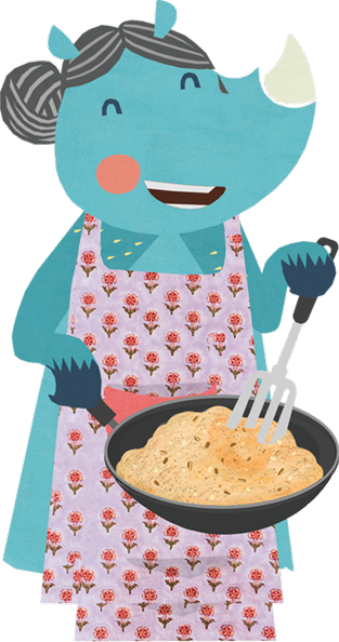 24th
Oct 2023
24th
Oct 2023
 4 min
4 min
To practice baby-led weaning, your little one needs to be able to sit up on their own before you begin. Once they can do that, you can start offering them soft but solid whole foods. We suggest starting with something simple like a banana – just cut it in half to make it easy for your child to hold and munch on.

As your baby becomes more comfortable, you can introduce other soft foods like steamed carrot sticks or omelet strips. Your child will have a blast exploring these new flavors and textures on their own!
Pros of Baby-Led Weaning
 Your baby is in charge of their own eating, which can help them develop healthy habits and intuitive eating skills. Don't worry if it seems overwhelming at first – babies are surprisingly quick learners!
By encouraging your baby to explore different flavors and textures at their own pace, you may notice a positive change in their eating habits. Plus, offering a variety of foods early on can help prevent picky eating later on.
Your baby is in charge of their own eating, which can help them develop healthy habits and intuitive eating skills. Don't worry if it seems overwhelming at first – babies are surprisingly quick learners!
By encouraging your baby to explore different flavors and textures at their own pace, you may notice a positive change in their eating habits. Plus, offering a variety of foods early on can help prevent picky eating later on. You can give your baby the same healthy meals you're eating, but their food should not contain salt, sugar, or spice. Also adjust the texture as needed.
Baby-led weaning can help your child develop hand-eye coordination, dexterity, and problem-solving skills, and it can boost their confidence when it comes to eating on their own.
You can give your baby the same healthy meals you're eating, but their food should not contain salt, sugar, or spice. Also adjust the texture as needed.
Baby-led weaning can help your child develop hand-eye coordination, dexterity, and problem-solving skills, and it can boost their confidence when it comes to eating on their own.
Cons of Baby-Led Weaning
 It can be messy! But don't worry - there are ways to minimize the mess, and cleaning up can be a fun bonding experience.
The first few days of baby-led weaning can be stressful as your baby gets used to the new routine. Just remember that every baby is different, and it may take some time to find what works best for your family.
Some babies take to self-feeding more easily than others, and it's okay if your little one needs some extra support and encouragement.
It can be messy! But don't worry - there are ways to minimize the mess, and cleaning up can be a fun bonding experience.
The first few days of baby-led weaning can be stressful as your baby gets used to the new routine. Just remember that every baby is different, and it may take some time to find what works best for your family.
Some babies take to self-feeding more easily than others, and it's okay if your little one needs some extra support and encouragement.

It's important to ensure babies are eating a balanced meal. If you’re feeling overwhelmed or uncertain on how to go about doing this, the research and guidance in this Course will help you.
Ready to Try Baby-Led Weaning? Here’s a Step-by-Step Guide
1) Position Your baby well
 Ensure your baby is sitting in a comfortable position during feeding time. Place them upright on your lap, in a high chair/booster seat, or on a flat surface with a soft blanket.
Their hands and arms should be free.
Don’t let your baby lie down or recline during mealtimes. It’s a common practice in Indian homes to make the baby lie down on their mother’s stretched out legs. If your baby is horizontal, they’re at a higher risk for choking!
Place a messy mat on your lap, table, or floor to make cleaning up afterward easier. Babies love to explore and may throw food around!
Ensure your baby is sitting in a comfortable position during feeding time. Place them upright on your lap, in a high chair/booster seat, or on a flat surface with a soft blanket.
Their hands and arms should be free.
Don’t let your baby lie down or recline during mealtimes. It’s a common practice in Indian homes to make the baby lie down on their mother’s stretched out legs. If your baby is horizontal, they’re at a higher risk for choking!
Place a messy mat on your lap, table, or floor to make cleaning up afterward easier. Babies love to explore and may throw food around!
2) Start feeding
 Consider the food consistency that your baby is developmentally ready for. Soft mashable foods like bananas and sweet potatoes (cubes, sticks, or wedges) are a great starting point. You can gradually move towards finger foods when your baby reaches around 9 months.
Consider the food consistency that your baby is developmentally ready for. Soft mashable foods like bananas and sweet potatoes (cubes, sticks, or wedges) are a great starting point. You can gradually move towards finger foods when your baby reaches around 9 months.
Always test the temperature of the food before feeding.

Use a soft-tipped plastic spoon to avoid injuring their gums.
 Either place the spoon with small amounts of food on the tray of the high chair, within the baby’s view. Or directly place the food in your baby's hands.
Either place the spoon with small amounts of food on the tray of the high chair, within the baby’s view. Or directly place the food in your baby's hands.
 A third option is to hold the food in your fingers and let your baby reach out and grab it.
Remember, the goal is to encourage your baby to become independent in putting food into their mouth, so try to avoid using your fingers to feed them.
Sitting in front of your baby with a food plate and eating alongside them can also be helpful in encouraging them to eat.
A third option is to hold the food in your fingers and let your baby reach out and grab it.
Remember, the goal is to encourage your baby to become independent in putting food into their mouth, so try to avoid using your fingers to feed them.
Sitting in front of your baby with a food plate and eating alongside them can also be helpful in encouraging them to eat.
3) When to stop feeding
 Let your baby decide how much they want to eat. When they start playing with their food, turning their face away, or throwing food around, it means they're full and you can end the meal.
Don’t worry about the quantity they are eating. Babies will commonly eat less food at this age. Don't hurry them to finish their meal or force feed them.
Let your baby decide how much they want to eat. When they start playing with their food, turning their face away, or throwing food around, it means they're full and you can end the meal.
Don’t worry about the quantity they are eating. Babies will commonly eat less food at this age. Don't hurry them to finish their meal or force feed them.
Tomorrow, we will explore the combination weaning method, which is a combination of the two methods you’ve read about so far.







 Did You Know
Did You Know




 We Suggest
We Suggest





















